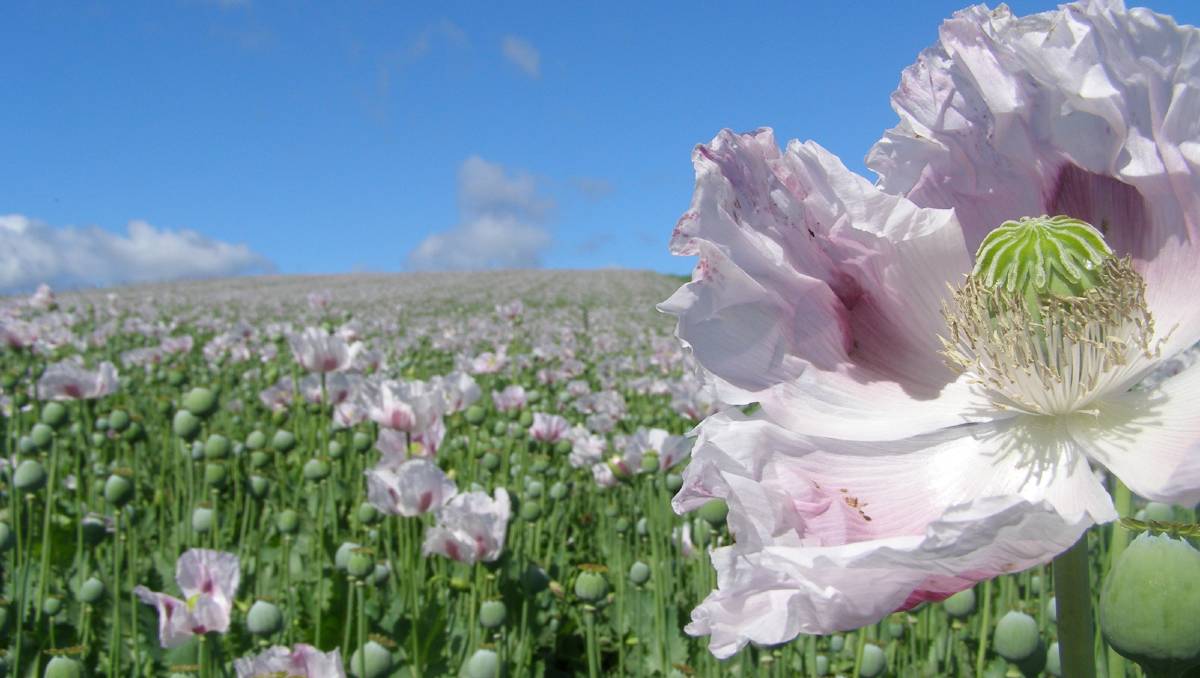Across six top-secret locations in the Riverina and Central West, a historic harvest is underway.
Over 400 hectares of the state’s first-ever opium poppy crop is being stripped and chemically analyzed. Cootamundra mixed-farmer David Forsyth sowed 24 hectares of the plant in June.
“The alkaloid content was 3.6 percent, we thought we might do four, but it was a terrible season; cold and after sowing it didn’t rain for four months.”
Poppy crops grown on fertile soils by the best growers in Tasmania typically yield three tonnes per hectare and assay more than 3 percent.
The venture could return an estimated $100 million to NSW in the next decade. However, the global oversupply of opiate material put great pressure on Tasmanian growers last year, and the lackluster performance of the crop in Victoria, who legalized it in 2014, has reportedly seen a number of farmers ditching it altogether. But Mr. Forsyth still believes it has potential.
“We’re increasing and will do 38 hectares next year, I’ve learned a lot and couldn’t have done it without the help of my wife Janelle, my son Brendan and his wife Ruby,” he said.




















